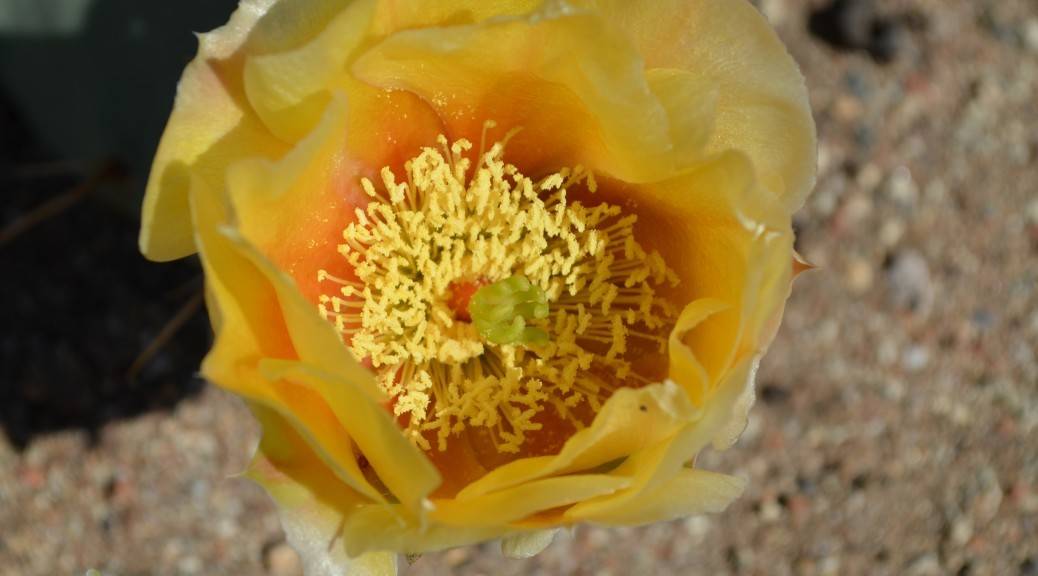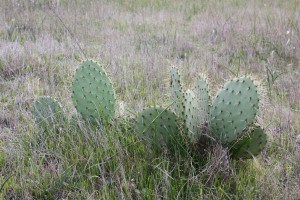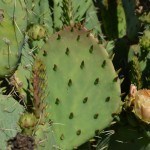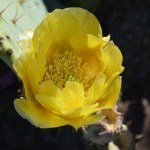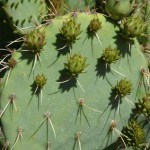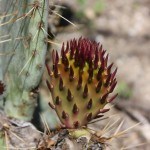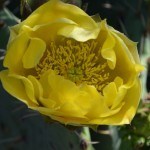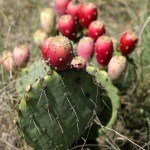Opuntia littoralis
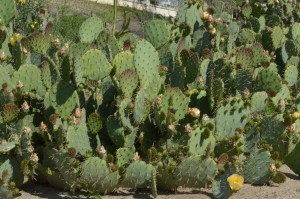
The next time you drive into the parking lot at Rice Canyon Open Space Preserve and as you navigate the turn-around, look at the Opuntia in the center island; this species of cactus is known by the common name coastal prickly pear. It is sometimes called the sprawling prickly pear due to its short stems and habit of growing close to the ground.
Coast Prickly Pear generally grows in dense clumps spread wide and up to 3 feet tall; its habitat is in coastal sage scrub community.
It is highly clonal and responds well to any disturbance – it can be very weedy as it covers whole hillsides. It recovers well after fires.
The fruits on the Opuntia are called tunas, by the Spanish Americans, are edible. Relished by the Indians, they are still eaten today. Great care and some skills are required to remove all of the bristles. After removing the spines and skin, the fleshy pads, called nopales, are sliced and eaten. If you wish, you can make Cactus Candy by soaking 1/2 inch slices of the tunas overnight in cold water and simmering slowly in a syrup of 3 cups sugar, 1/2 cup water, 2 tbs. orange juice and 1 tbs. lemon juice until the syrup is almost absorbed. After soaking in water, Indians and early pioneers of the southwest used the split, fleshy pads, of these cacti for binding wounds and bruises. In Mexico the pads are boiled and crushed, the juice being added to white wash and mortar to make it stick more securely.
Cacti of the flat-stemmed variety were a staple of the Indians of most western states. The Blackfeet of the northern plains eliminated warts by rubbing the young spines into them. The Navajo picked the fruit of the Prickly Pear with great reverence. To appease the spirit they believed inhabited the plant, they offered the plant a hair from the gatherer’s head in sacrifice. In Mexico, the Prickly Pear is represented on the silver peso, the state flag, and on the Arms of the Republic.
Mexican folklore states that in 1325 the Aztecs were being pursued by a hostile people when then came upon an eagle strangling a snake atop a Prickly Pear. The Aztecs interpreted this as a good sign, perhaps a symbol of their eventual victory over their adversaries, and decided to settle at that site-the present location of Mexico City.
The fruits, seeds and stems serve as food for many different kinds of animals. Rodents, in particular, eat the seeds for food and often chew the pads for moisture. Sheep and deer browse on them also. Birds especially feed on the fruit, while the Cactus Wren makes its nest in the branches of certain species. Many Opuntias are on the rare and endangered plant list for California and should not be picked.
Source; nathistoc.bio.uci.edu

